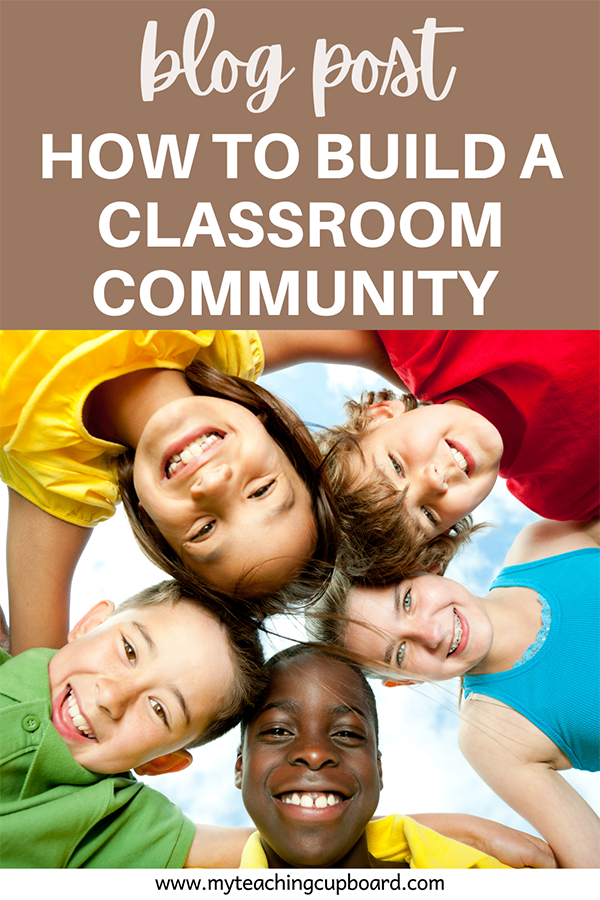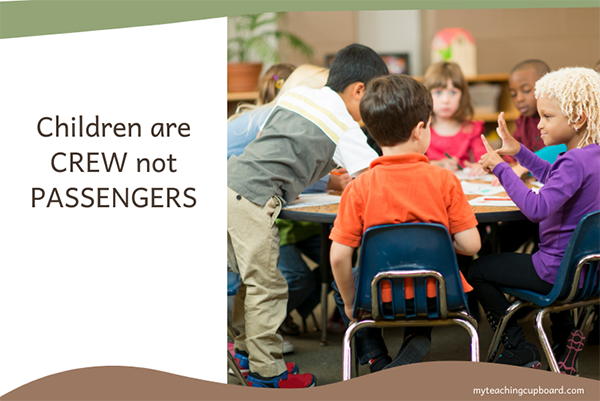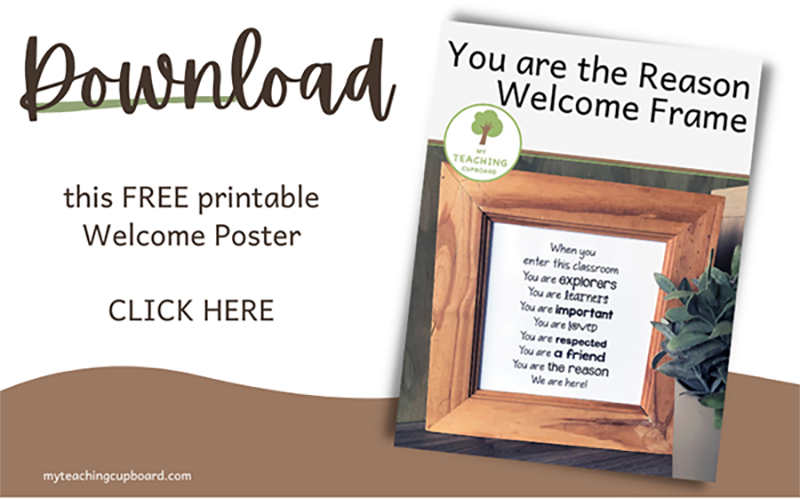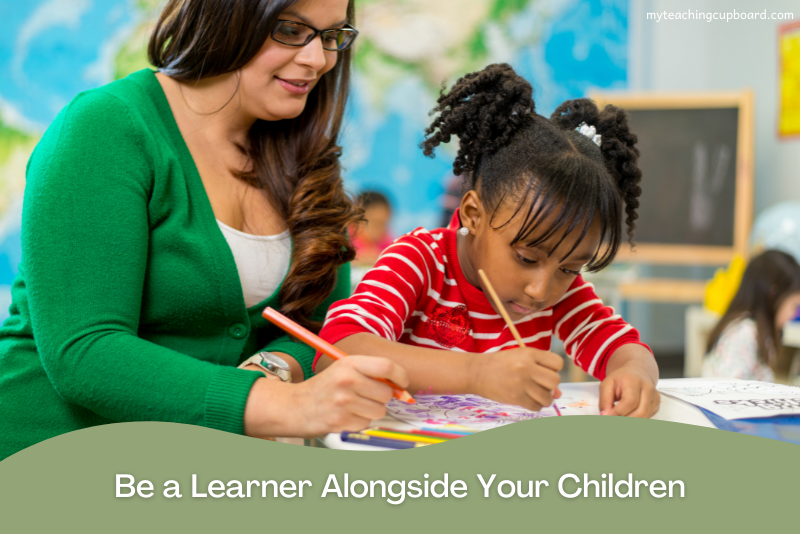How to Build a Classroom Community
Preparing for back to school means a never ending to-do list but please add building classroom community to your list of back to school tasks. If you want to have a productive school year, it really should be one of your top priorities.
In this blog post you will discover what a classroom community is and why building a classroom community is important. If you are looking for ways to build classroom community, you will also love the classroom community building ideas and activities in this blog post too.
Those first six weeks of school are crucial for getting to know your students, setting routines and procedures and building a classroom community. In fact, building a classroom community is the secret to having a successful school year.
Community building is important for you and for your children. School will be a place of routine, stability and even safety for some of your children. Spending time to develop your classroom community at the start of the school year will be time well spent.
What is a Classroom Community?
A classroom community is achieved when you have a class where the children have a sense of belonging. In a classroom community you and your children work together to create a place where every class member feels welcome and valued. A strong feeling of connection is one of the characteristics of a classroom community.
Why Is Building a Classroom Community Important?
Everyone in your classroom and everyone related to it will benefit when your students feel part of a classroom community. If you can create a classroom environment where your students feel connected to you and to their peers, wonderful things happen.
When children feel respected and valued, they will be much more likely to take ownership of their behaviour and their learning.
As students' sense of community increases, participation increases. By encouraging supportive relationships among students through cooperative learning activities, student satisfaction with the group increases and behavioural referrals drop by as much as 71% Johnson L et al. (1995)
Classroom management will be so much easier when you are all working together to create a positive learning environment.
Building a sense of community in the classroom can increase participation and engagement. If your children feel confident and safe in your classroom, they will be more likely to have a go at answering those challenging questions. They will also have the confidence to tackle problems and willingly share their thoughts and ideas.
According to the Association for Children’s Mental Health (ACMH), one in five children has a diagnosable emotional, behavioural, or mental health disorder. If you can create a supportive and inclusive classroom community, you will be developing a classroom environment more likely to meet the complex needs of not only these children, but all the children in your class.
An inclusive and supportive classroom community will foster a classroom of children who feel they belong. Each and every child will feel they are an accepted part of the larger class group.
In turn, a strong classroom community will foster a group of children who are regulating their emotions and negotiating social conflicts so that they will be ready to learn the academic curriculum.
By fostering a sense of community in your classroom, your children will feel empowered, confident and resilient. A positive classroom community will directly influence the success of your children at school.
How to Build Community in the Classroom
A sense of community is essential in creating a successful classroom learning environment. Success is not just about academic growth. Social and emotional development is equally important and should be an intentional and significant part of your curriculum.
This does not just magically happen. Each classroom member needs to work on creating a positive classroom community.
You will need to purposefully plan, teach and model the desirable classroom procedures and expectations. You must consistently make the creation of a classroom community a priority.
So if you are wondering how to build a sense of community, here are some community building activities and ideas you can implement. If you are keen to build classroom community, pick a few to try this year or adapt them all!!
Welcome Your Children
Every child in your class comes to school with diverse background experiences. Welcome these experiences and their diversity. Your goal should be to create a classroom environment that says, "You are welcome here."
I have a little poster right at our door which reminds everybody that they are an important part of our classroom. If you would like this free building community in the classroom pdf printable poster, you can download it HERE in my FREE Resource library.
Make Classroom Rules Together
One of our most important classroom community building activities is making our collaborative classroom rules. Instead of reading out and enforcing a set of teacher designed classroom rules, try making the list together as a class.
As management and behaviour problems arise, discuss them with the class. Brainstorm possible solutions and make your expectations clear. Together decide if this solution needs to be a classroom rule.
Ensure you have plenty of discussions about how and why your classroom rules help to keep everyone safe. Discuss the importance of values like respect, honesty and persistence and how the classroom rules will help everyone (including the teacher) learn and care about each other.
Also, don’t be afraid to edit and modify the classroom rules throughout the year.
Hold Morning Meetings
You can create a sense of community by consistently holding a class meeting at the beginning of every school day. Dedicate at least 15 minutes in your timetable for the class meeting every morning.
At this meeting, make social and emotional skills and building relationships the focus. It is important that every voice is encouraged, respected and heard.
One of my must-have resources for morning meetings is the Morning Meeting Book by Roxann Kriete. Her book has some great community building activities for the classroom. Whenever I am needing inspiration or looking for more activities to build community, I turn to this book. Roxann states that her Morning Meeting Book will:
build community and create a climate of trust
increase students' confidence and investment in learning
improve children's reading, writing, listening, and speaking skills
provide a meaningful context for teaching academic skills
encourage cooperation and inclusion
give children daily practise in respectful communication
Collaborate on Class Projects
Working together to reach a common goal is a wonderful activity to develop a sense of togetherness and for building community in the classroom.
Large art projects, class gardens, class made books and class celebrations are all common projects you might like to consider if you are looking for activities to build community in the classroom.
You just need to decide on a common goal and work together as a class to reach it. Your goal could be as simple as keeping your eating area rubbish free for a week.
Don’t forget to celebrate your wins. Class celebrations are another fantastic community building activity!!
Adopt an Inquiry Learning Pedagogy
Through play based and inquiry learning pedagogies your children will be given extensive opportunities for meaningful interactions and community building.
As your children investigate together, they will help each other learn. Relationships will be formed, and social skills fine-tuned. Trust and collaboration are also developed as your children get to know each other as learners and concerns about peer judgment and fear of criticism fade away.
Play based and inquiry learning pedagogies lay the foundation for a strong classroom community. If you are interested in discovering how you can adopt a play based learning pedagogy in your classroom this year, you might like to check out this Blog Post: Getting Started With Play Based Learning
Make Relationships a Priority
From the very first day and for every single day after that, make building relationships your number one priority.
Whenever possible, give your children opportunities to share their opinions and experiences with the class. Really listen and take an interest in them.
Model compassion and respect. Value your children. Get to know them. When you know and respect your children, and your children know and respect each other, you will be well on the way to building a strong classroom community.
Be a Class Member
You cannot build a classroom community if you are not modelling and participating along with your children.
Make sure you share your own stories and let your children know about you as a person – not just you as a teacher. Discuss your feelings, ask for help, admit your mistakes and be a learner along with your children.
Build a Growth Mindset
Children with growth mindsets are not only a delight to teach but studies show they have much better outcomes than students with fixed mindsets.
Invest in teaching and building your children’s growth mindsets and it will be a catalyst to building a kind, caring and resilient classroom community.
If you are interested in learning exactly what a growth mindset is and how you can develop growth mindsets in the students of your classroom, you might be interested in reading this Blog Post: Affirmations & Growth Mindsets for Children
Inspire resilience and confidence with 120 printable growth mindset posters for kids. Includes a lesson plan, checklist, and worksheet to build student motivation.
Create a Classroom That Never Gives Up
Some students quit at the first sign of difficulty. Others shy away from trying in case they make a mistake. You know they’re capable of more but they just need the right tools to believe it.
This Growth Mindset Affirmations Pack gives you those tools.
You’ll get 120 printable, nature-themed posters plus a done-for-you lesson plan, observation checklist, and student reflection worksheet so you can turn positive thinking into daily classroom practice - without adding hours to your planning!
What’s Inside this Growth Mindset Resource
120 Growth Mindset Posters - Calming, nature-inspired theme with affirmations that encourage resilience, perseverance, and self-belief.
Ready-to-Teach Lesson Plan - Step-by-step guide for introducing the growth mindset affirmations, sparking discussion, and linkingit all to real experiences.
Printable Observation Checklist - Quickly record student growth mindset behaviours to support assessment and reporting.
Student Reflection Worksheet - A draw-and-write template for students to illustrate a time they succeeded at something hard and write their chosen affirmation.
Why Teachers Love This Growth Mindset Pack
Saves Time because all the prep is done — simply print and go!
Fits Your Curriculum: Supports ACARA Personal and Social Capability outcomes.
Engages Students: Visuals, stories, and personal connections make the affirmations meaningful.
Encourages Independence: Students learn to notice and name their own growth mindset and learning behaviours.
How to Use These Growth Mindset Posters
Weekly Focus: Introduce one affirmation each Monday using the lesson plan.
Daily Practice: Refer to the poster during circle time, morning meeting, student challenges or transitions.
Ongoing Assessment: Use the included checklist to track progress and celebrate growth.
Friday Reflection: Students complete the worksheet to show how they demonstrated a growth mindset.
With this pack, you’ll go beyond decorating your classroom. You’ll be building a culture of persistence, positivity, and peer encouragement.
Download your Growth Mindset Affirmations Pack today and start the shift from “I can’t” to “I can — and I will.”
The Teacher in the Classroom and Community
In the end, it is the teacher who has the ultimate influence over the creation of a classroom community.
You are the essential element.
You are the one responsible for curating a classroom community.
It has nothing to do with the number of resources you have or the size of your classroom that counts. It is you - your attitude, the way you interact with the children in your classroom which makes or breaks the classroom community.
Building a classroom community is an important investment for you and your children. Spending time to develop your classroom community at the start of the school year is essential but maintaining and nurturing your classroom community for the whole year is equally important. It is probably the MOST IMPORTANT thing you will do all year!
If you liked this blog post on how to build a classroom community, please consider sharing it...
Just CLICK the sharing box below.👇















